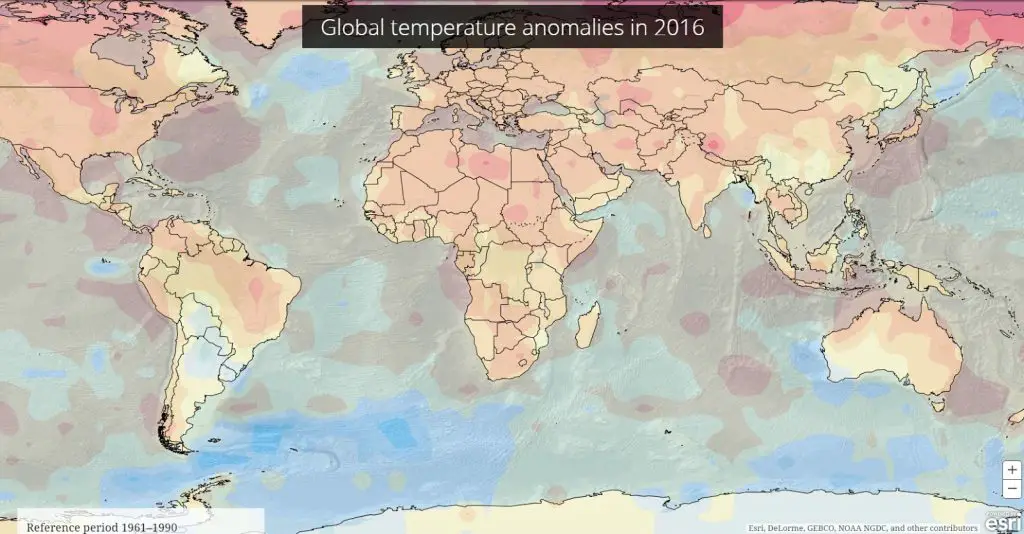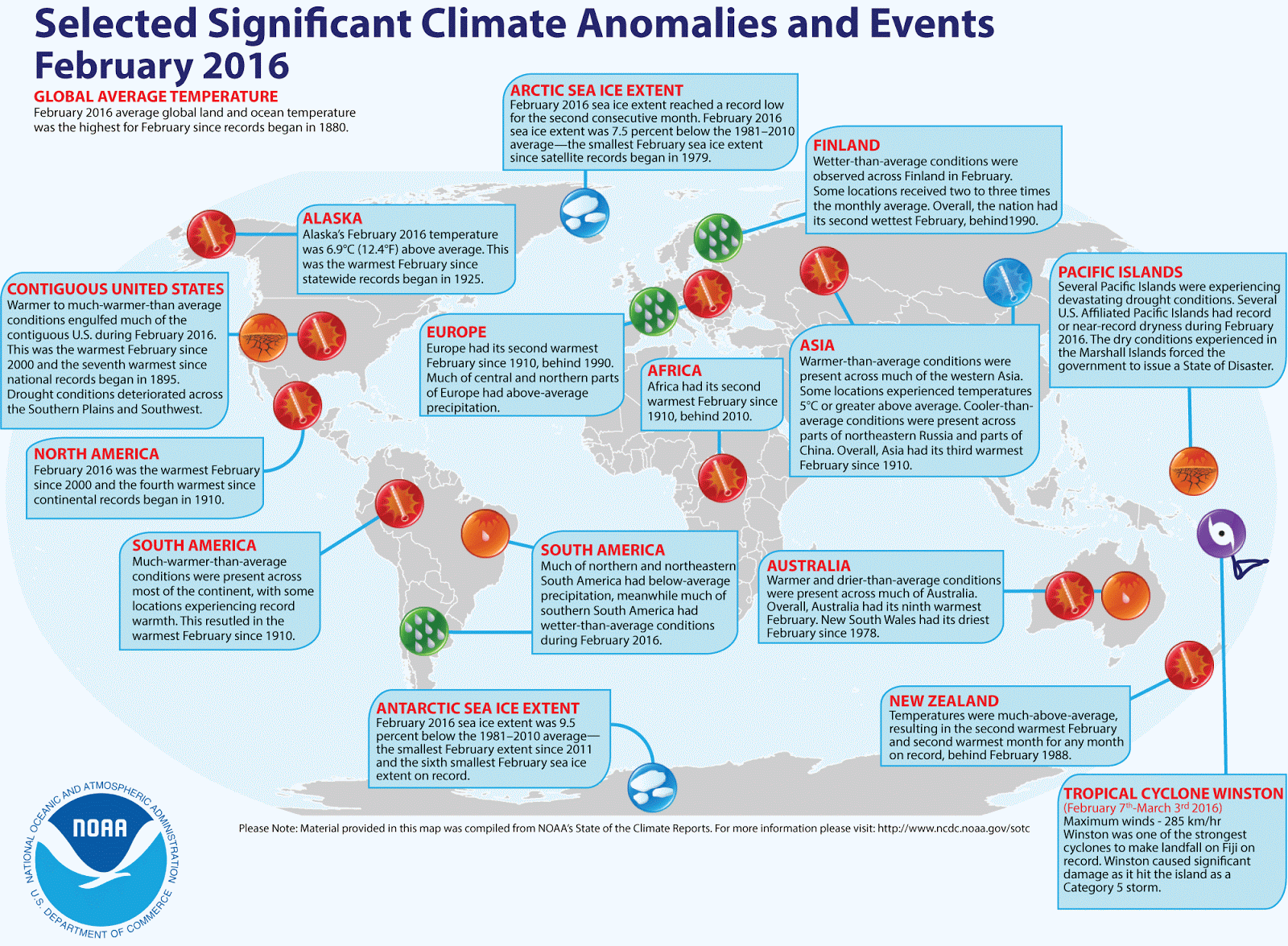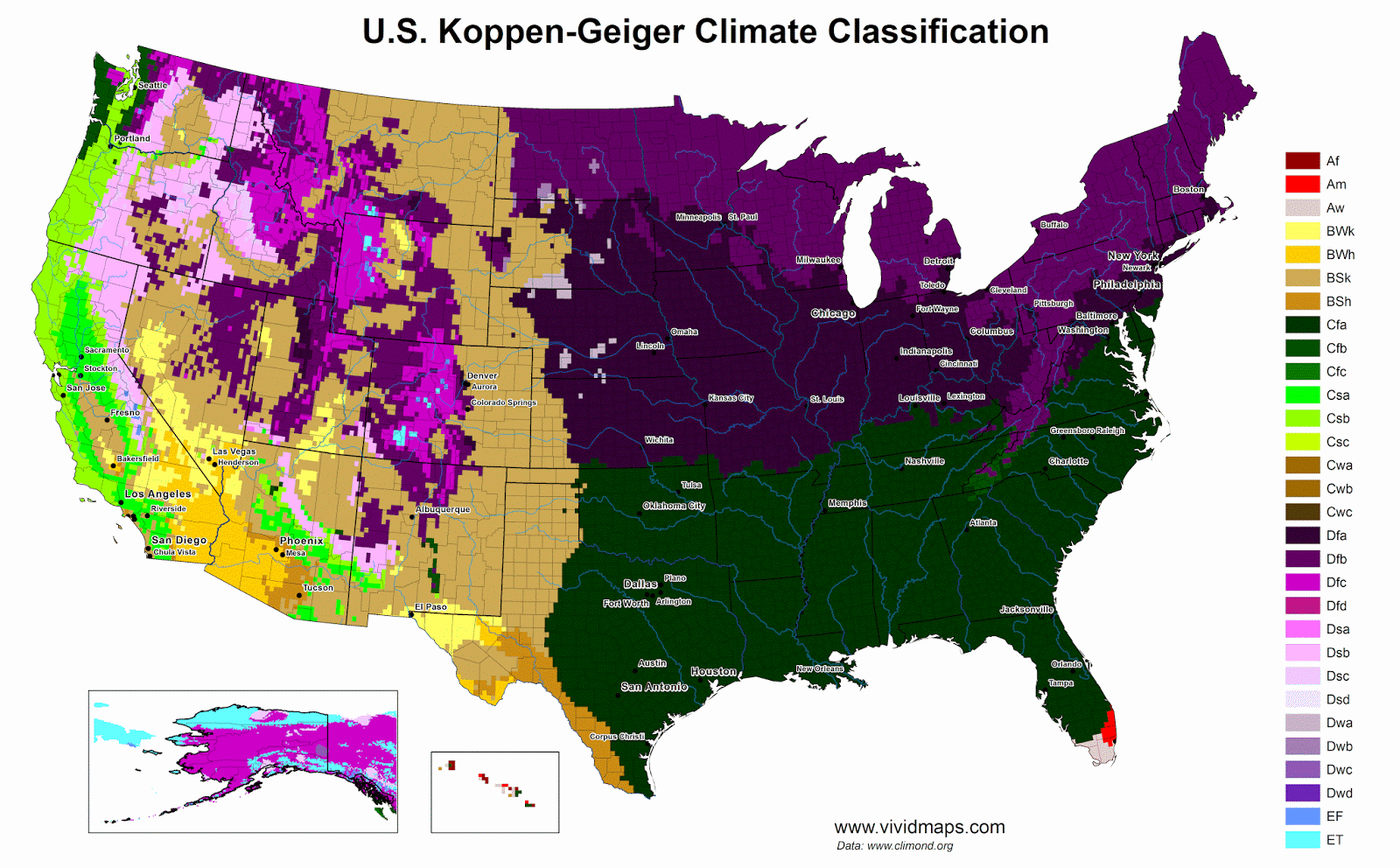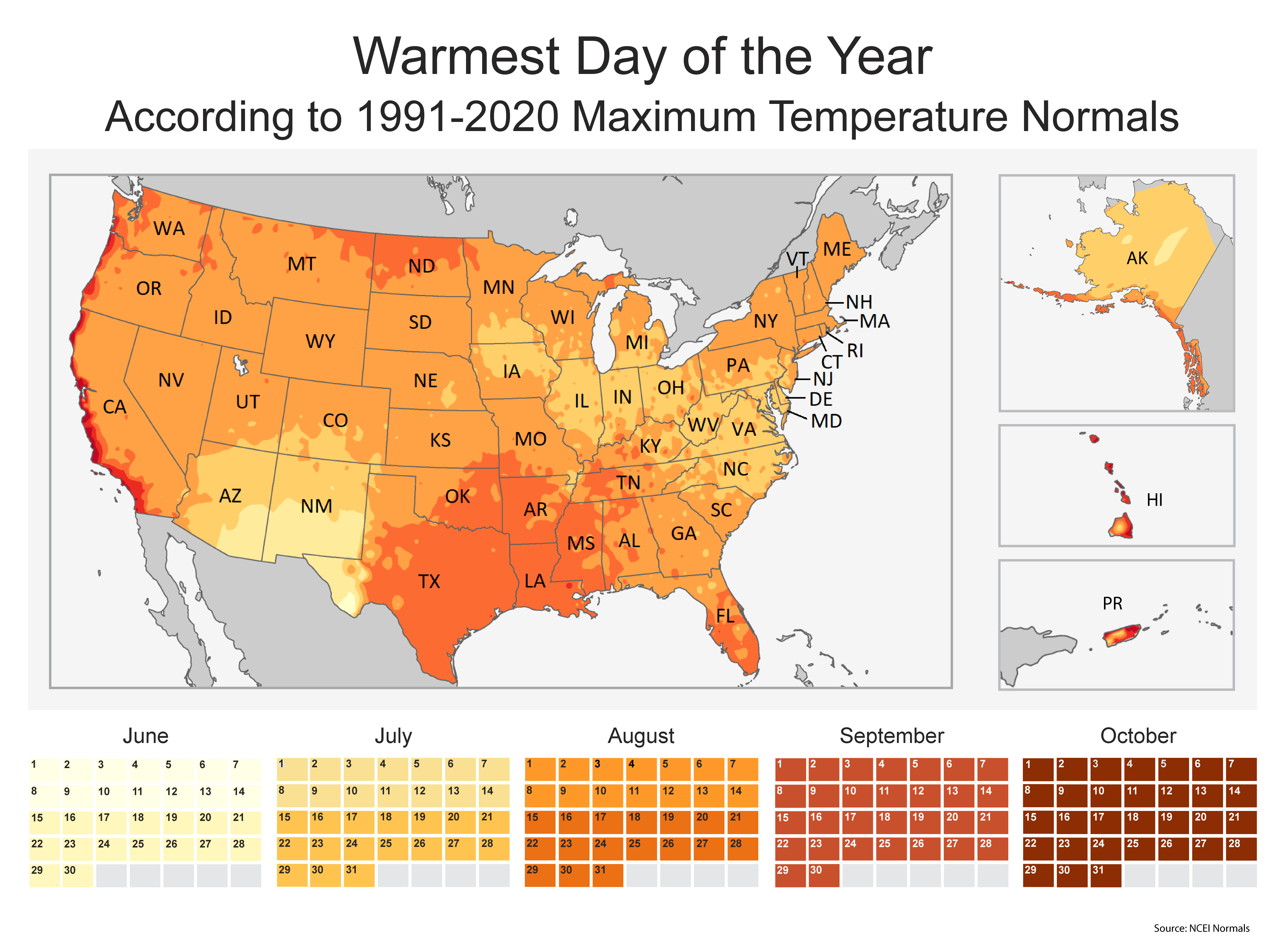Global temperature anomalies in 2016
2016 was the warmest year on record: +0.83 °C +/− 0.10 °C warmer than the average for the 1961–1990 reference period, +1.1 above the pre-industrial period.
Source: UK Met Office Hadley Centre
North America, Central America & Caribbean
It was the warmest year on record for North America. The Continental United States had its second-warmest year on record, Alaska its warmest, and Canada its fourth-warmest.
The most damaging wildfire in Canadian history – and the country’s most costly natural disaster – started in May. On 4 May temperatures reached 33 °C – the highest on record so early in the year – accompanied by strong winds and low humidity. The fire ultimately burned an area of about 590 000 ha before being declared under control in early July.
North America had its warmest autumn on record. Unusually dry conditions in the south-eastern United States contributed to the most destructive wildfire in modern history. In and around Gatlinburg, Tennessee, on 28 November, some 2 400 buildings were damaged or destroyed.
Europe
It was the third-warmest year for Europe. A significant late-season heatwave affected many parts of western and central Europe. The highest temperatures occurred in southern Spain, where 45.4 °C was recorded at Cordoba on 6 September. Portugal recorded the largest burnt area in summer wildfires since 2006. A fire on Madeira in early August coincided with the hottest day since 1976 at Funchal Airport (38.2 °C).
The heat extended to northern Europe: 34.4 °C at Gravesend (England) on 13 September was a late-season record for the United Kingdom by more than 2 °C and the highest September temperature in the United Kingdom since 1911, while many monthly or late-season records were set in Germany, Sweden and Norway.
Africa
It was the second-warmest year for Africa and the warmest June-August period. The year started with an extreme heatwave in southern Africa. Many stations set all-time records in the first week of January; in some cases, these broke records which were only a few weeks’ old, following heatwaves in November and December 2015. On 7 January, temperatures reached 42.7 °C at Pretoria and 38.9 °C at Johannesburg, both of which were 3 °C or more above the all-time records at those sites prior to November 2015. Significant high temperatures were also recorded in Morocco, Tunisia and Libya.
South America
Overall 2016 was the second warmest year for South America. The large majority of the continent recorded above average annual temperatures with temperature anomalies exceeding 1°C over most of northern part of the continent. On the other hand, the continent exhibited the most significant cool land area covering parts of Argentina, Paraguay and lowland Bolivia. Cool temperature anomalies were most pronounced in autumn and early winter, especially in May when Argentina had its lowest nationwide mean maximum temperature on record.
Asia
Asia had its warmest January-September on record. India and Thailand recorded their warmest year. The highest temperature observed was 54.0 °C at Mitribah (Kuwait) on 21 July, which (subject to ratification) will be the highest temperature on record for Asia. Other extremely high temperatures included 53.9 °C at Basra (Iraq) and 53.0 °C at Delhoran ( the extremeIslamic Republic of Iran – a national record), both on 22 July. A number of monthly records were set in March and April in Malaysia. A few weeks later, 51.0 °C was observed on 19 May at Phalodi, the highest temperature on record for India.Extreme heat affected South and South-East Asia in April and May, prior to the start of the summer monsoon. The extreme heat was centred on Thailand, where a national record of 44.6 °C was set at Mae Hong Son on 28 April and all-time records were set at many individual locations.
The most significant cold wave occurred in late January in eastern Asiaextremelylow temperatures extending southwards from eastern China as far south as Thailand. In southern China, Guangzhou recorded its first snow since 1967 and Nanning its first since 1983, whilst the temperature fell to 3.1 °C at the Hong Kong Observatory, its sixth lowest temperature on record.
South-West Pacific
New Zealand had its warmest year on record. During the summer of 2015/2016, long-lived fires affected large parts of central and western Tasmania, which, at the time, was badly affected by drought. The fires mostly broke out in mid-January and extended to areas on the Central Plateau where fire is extremely rare, resulting in significant damage to some sensitive alpine vegetation in Tasmanian Wilderness World Heritage Areas.
The very warm ocean temperatures contributed to extensive coral bleaching in some tropical waters. Among the areas significantly affected was the Great Barrier Reef off the east coast of Australia, where record high sea-surface temperatures occurred in March. Coral mortality of up to 50% was reported in northern parts of the reef north of Lizard Island.
Via arcgis.com









